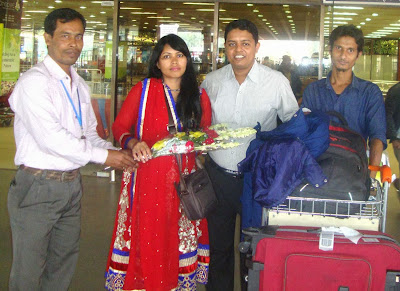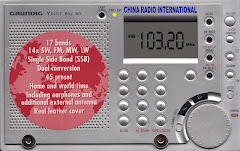Find frequencies for in at : GMT (NOW)
or
Find out what stations are broadcasting on a frequency of kHz ( ± 10 kHz)
Frequencies and Sites in Bengali Currently On-Air
Map of sites and frequencies currently on air in Bengali
Your search produced 54 results and took 0.148 Seconds. Database dated 11 Nov 13.
Freq ▼ Station Start End Days Language Pwr Az Transmitter Site Lat/Long Remarks ◆
4750 R.BANGLADESH BETAR 08:30 12:35 1234567 Bengali 100 ND
BGD
Shavar 23N26 090E12
SIGNAL_STRENGTH_4
BANGL
4750 R.BANGLADESH BETAR 12:55 15:30 1234567 Bengali 100 ND
BGD
Shavar 23N26 090E12
OFF_AIR
BANGL
4750 R.BANGLADESH BETAR 15:45 16:00 1234567 Bengali 100 ND
BGD
Shavar 23N26 090E12
OFF_AIR
BANGL
5845 BBC 13:30 13:59 1234567 Bengali 250 305
THA
Nakhon Sawan 15N03 100E03
OFF_AIR
5875 BBC 16:30 17:00 1234567 Bengali 250 325
THA
Nakhon Sawan 15N03 100E03
OFF_AIR
5905 FEBA RADIO 00:00 00:30 1234567 Bengali 100 131
UZB
Tashkent 41N13 069E09
OFF_AIR
IBRA BAB
5955 TWR India 13:15 13:30 ......7 Bengali 250 224
RUS
Irkutsk 52N17 104E17
OFF_AIR
7240 Athmeeya Yatra R. (GFA) 00:15 00:30 1.....7 Bengali 250 85
D
Nauen 52N37 012E54
OFF_AIR
AYA MBR
7250 R.BANGLADESH BETAR 05:00 06:00 1234567 Bengali 250 305
BGD
Dhaka 23N42 090E26
OFF_AIR
BANGL
7250 R.BANGLADESH BETAR 07:00 09:00 1234567 Bengali 250 290
BGD
Dhaka 23N42 090E26
OFF_AIR
BANGL
7250 R.BANGLADESH BETAR 16:30 17:00 1234567 Bengali 250 290
BGD
Dhaka 23N42 090E26
OFF_AIR
BANGL
7250 R.BANGLADESH BETAR 19:15 20:00 1234567 Bengali 250 320
BGD
Dhaka 23N42 090E26
OFF_AIR
BANGL
7320 VO ISLAMIC REP.IRAN 14:20 15:20 1234567 Bengali 500 235
IRN
Sirjan 29N26 055E40
OFF_AIR
IRIB
7325 BBC 00:30 01:00 1234567 Bengali 250 305
THA
Nakhon Sawan 15N03 100E03
OFF_AIR
7375 VO ISLAMIC REP.IRAN 16:19 16:49 1234567 Bengali 500 100
IRN
Kamalabad 35N45 051E27
OFF_AIR
IRIB
7405 VOICE OF AMERICA 16:00 17:00 1234567 Bengali 250 300
THA
Udon Thani 17N25 102E45
OFF_AIR
IBB/
7485 BBC 16:30 17:00 1234567 Bengali 100 330
SNG
Kranji 01N25 103E44
OFF_AIR
7545 TWR India 00:30 00:45 .23456. Bengali 250 116
UKR
OFF_AIR
7560 BBC 13:30 13:59 1234567 Bengali 250 325
THA
Nakhon Sawan 15N03 100E03
OFF_AIR
9390 FEBA RADIO 15:00 15:30 1234567 Bengali 100 131
UZB
Tashkent 41N13 069E09
OFF_AIR
IBRA BAB
9490 CHINA RADIO INTER. 13:00 14:00 1234567 Bengali 150 270
CHN
Kunming 25N10 102E49
OFF_AIR
9490 CHINA RADIO INTER. 14:00 14:57 1234567 Bengali 150 270
CHN
Kunming 25N10 102E49
OFF_AIR
9490 VOICE OF AMERICA 16:00 17:00 1234567 Bengali 250 283
PHL
Tinang 15N20 120E36
OFF_AIR
IBB/
9510 BBC 00:30 01:00 1234567 Bengali 250 300
THA
Nakhon Sawan 15N03 100E03
OFF_AIR
9510 BBC 01:30 02:00 1234567 Bengali 250 305
THA
Nakhon Sawan 15N03 100E03
OFF_AIR
9600 CHINA RADIO INTER. 13:00 13:57 1234567 Bengali 150 255
CHN
Baoji-Xinjie 34N30 107E10
OFF_AIR
9610 CHINA RADIO INTER. 15:00 15:57 1234567 Bengali 150 270
CHN
Kunming 25N10 102E49
OFF_AIR
9620 VO ISLAMIC REP.IRAN 14:20 15:20 1234567 Bengali 500 94
IRN
Kamalabad 35N45 051E27
OFF_AIR
IRIB
9650 BBC 16:30 17:00 1234567 Bengali 250 340
SNG
Kranji 01N25 103E44
OFF_AIR
9655 CHINA RADIO INTER. 02:00 02:57 1234567 Bengali 150 270
CHN
Kunming 25N10 102E49
OFF_AIR
9690 CHINA RADIO INTER. 15:00 15:57 1234567 Bengali 150 270
CHN
Kunming 25N10 102E49
OFF_AIR
9740 VO ISLAMIC REP.IRAN 16:19 16:49 1234567 Bengali 500 94
IRN
Kamalabad 35N45 051E27
OFF_AIR
IRIB
9880 BBC 14:00 15:00 1.3.... Bengali 250 90
UAE
Dhabbaya 24N10 054E15
OFF_AIR
11610 CHINA RADIO INTER. 13:00 14:00 1234567 Bengali 150 270
CHN
Kunming 25N10 102E49
OFF_AIR
11610 CHINA RADIO INTER. 14:00 14:57 1234567 Bengali 150 270
CHN
Kunming 25N10 102E49
OFF_AIR
11640 CHINA RADIO INTER. 02:00 02:57 1234567 Bengali 150 270
CHN
Kunming 25N10 102E49
OFF_AIR
11700 R.PAKISTAN 09:00 10:00 1234567 Bengali 100 118
PAK
Islamabad API-6 33N27 073E12
OFF_AIR
PAK
11760 VO ISLAMIC REP.IRAN 14:20 15:20 1234567 Bengali 500 100
IRN
Kamalabad 35N45 051E27
OFF_AIR
IRIB
11870 R.VERITAS ASIA 14:00 14:30 1234567 Bengali 250 300
PHL
Palauig-Zambales 15N28 119E49
OFF_AIR
RVA
12025 BBC 00:30 01:00 1234567 Bengali 250 330
SNG
Kranji 01N25 103E44
OFF_AIR
12035 BBC 14:00 15:00 1.3.... Bengali 250 305
THA
Nakhon Sawan 15N03 100E03
OFF_AIR
12035 R.JAPAN 13:00 13:45 1234567 Bengali 100 131
UZB
Tashkent 41N13 069E09
OFF_AIR
NHK
12065 BBC 13:30 14:00 1234567 Bengali 100 330
SNG
Kranji 01N25 103E44
OFF_AIR
12095 BBC 14:00 15:00 1.3.... Bengali 250 315
SNG
Kranji 01N25 103E44
OFF_AIR
15120 R.RIYADH 12:00 14:57 1234567 Bengali 500 70
ARS
Riyadh 24N30 046E22
OFF_AIR
BSKSA Holy Qur`an
15215 KSDA-AWR GUAM 13:00 13:30 1234567 Bengali 100 285
GUM
Agat 13N20 144E39
OFF_AIR
AWR
15235 Athmeeya Yatra R. (GFA) 15:15 15:30 1....67 Bengali 250 85
D
Nauen 52N37 012E54
OFF_AIR
AYA MBR
15265 R.VERITAS ASIA 00:30 00:57 1234567 Bengali 250 280
PHL
Palauig-Zambales 15N28 119E49
OFF_AIR
RVA
15270 BBC 01:30 02:00 1234567 Bengali 250 315
SNG
Kranji 01N25 103E44
OFF_AIR
15340 HCJB AUSTRALIA 12:45 13:00 .2..... Bengali 100 310
AUS
Kununurra 15S46 128E41
OFF_AIR
HCA
15340 HCJB AUSTRALIA 14:30 14:45 .2..... Bengali 100 310
AUS
Kununurra 15S46 128E41
OFF_AIR
HCA
15430 ADVENTIST WORLD R. 12:30 13:00 .23.5.7 Bengali 125 25
CLN
Trincomalee 08N43 081E08
OFF_AIR
17760 HCJB AUSTRALIA 01:15 01:30 .2..... Bengali 100 310
AUS
Kununurra 15S46 128E41
OFF_AIR
HCA
17760 HCJB AUSTRALIA 02:15 02:30 .2..... Bengali 100 310
AUS
Kununurra 15S46 128E41
OFF_AIR
HCA





